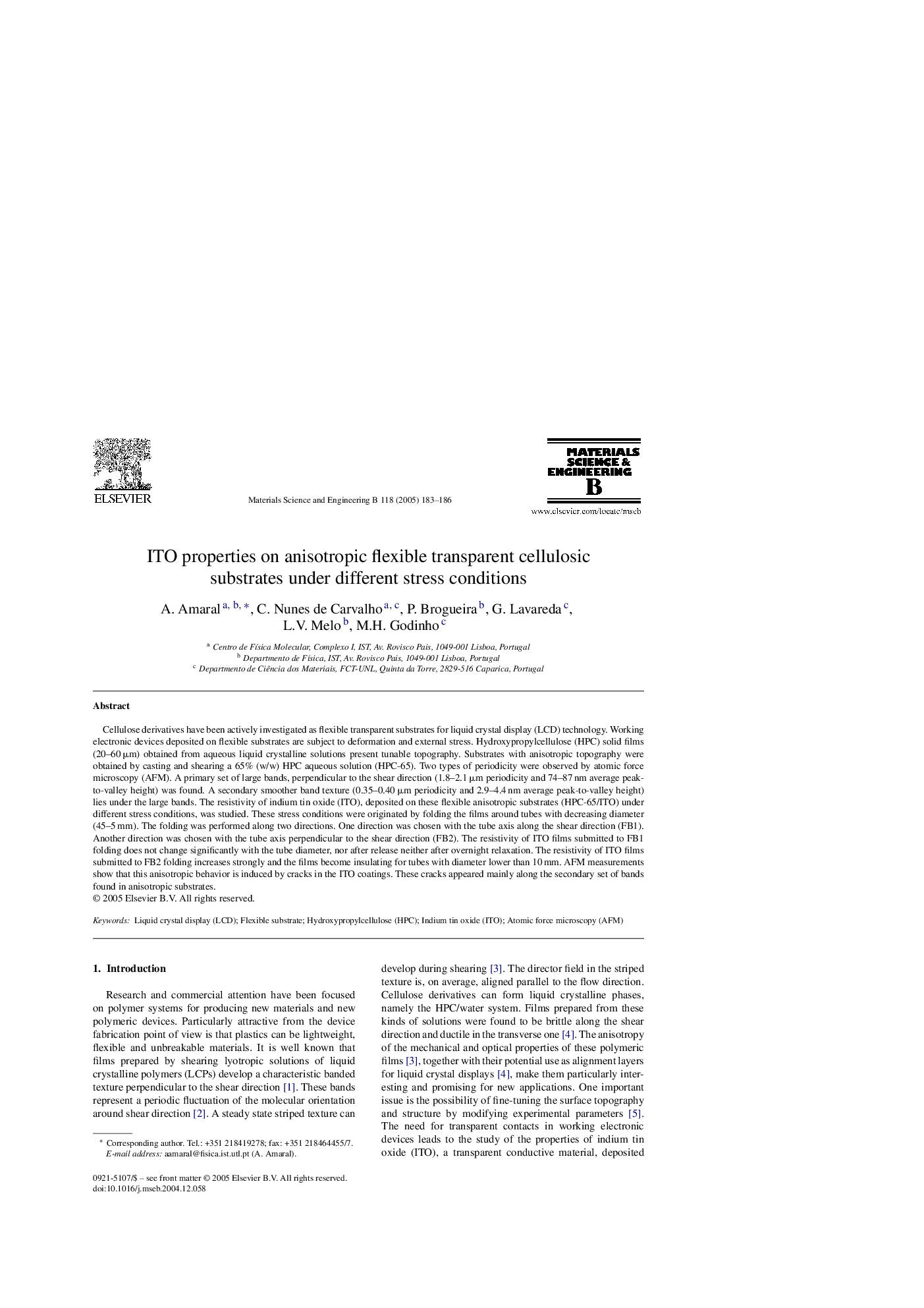| Article ID | Journal | Published Year | Pages | File Type |
|---|---|---|---|---|
| 9784109 | Materials Science and Engineering: B | 2005 | 4 Pages |
Abstract
Cellulose derivatives have been actively investigated as flexible transparent substrates for liquid crystal display (LCD) technology. Working electronic devices deposited on flexible substrates are subject to deformation and external stress. Hydroxypropylcellulose (HPC) solid films (20-60 μm) obtained from aqueous liquid crystalline solutions present tunable topography. Substrates with anisotropic topography were obtained by casting and shearing a 65% (w/w) HPC aqueous solution (HPC-65). Two types of periodicity were observed by atomic force microscopy (AFM). A primary set of large bands, perpendicular to the shear direction (1.8-2.1 μm periodicity and 74-87 nm average peak-to-valley height) was found. A secondary smoother band texture (0.35-0.40 μm periodicity and 2.9-4.4 nm average peak-to-valley height) lies under the large bands. The resistivity of indium tin oxide (ITO), deposited on these flexible anisotropic substrates (HPC-65/ITO) under different stress conditions, was studied. These stress conditions were originated by folding the films around tubes with decreasing diameter (45-5 mm). The folding was performed along two directions. One direction was chosen with the tube axis along the shear direction (FB1). Another direction was chosen with the tube axis perpendicular to the shear direction (FB2). The resistivity of ITO films submitted to FB1 folding does not change significantly with the tube diameter, nor after release neither after overnight relaxation. The resistivity of ITO films submitted to FB2 folding increases strongly and the films become insulating for tubes with diameter lower than 10 mm. AFM measurements show that this anisotropic behavior is induced by cracks in the ITO coatings. These cracks appeared mainly along the secondary set of bands found in anisotropic substrates.
Keywords
Related Topics
Physical Sciences and Engineering
Materials Science
Electronic, Optical and Magnetic Materials
Authors
A. Amaral, C. Nunes de Carvalho, P. Brogueira, G. Lavareda, L.V. Melo, M.H. Godinho,
